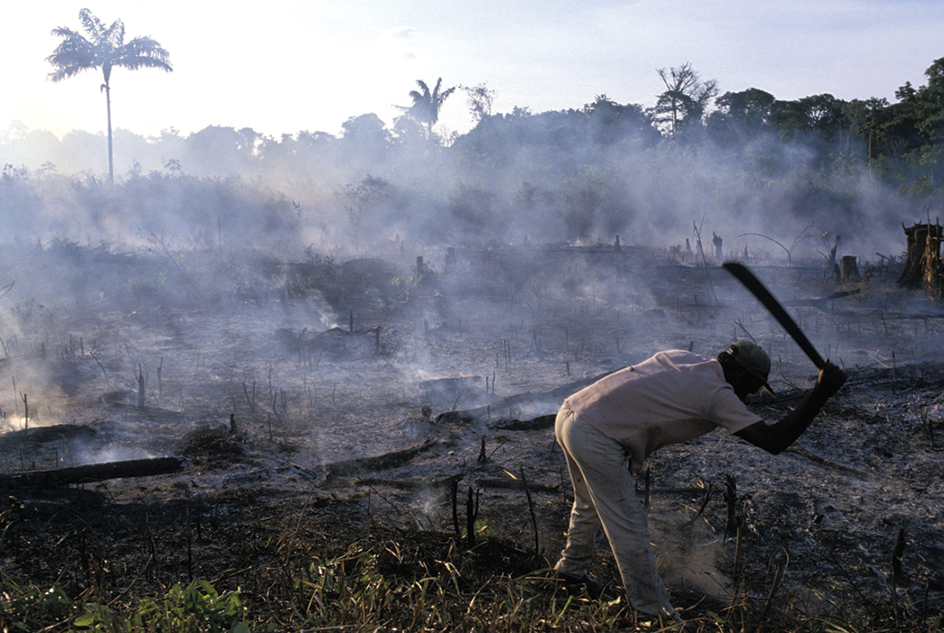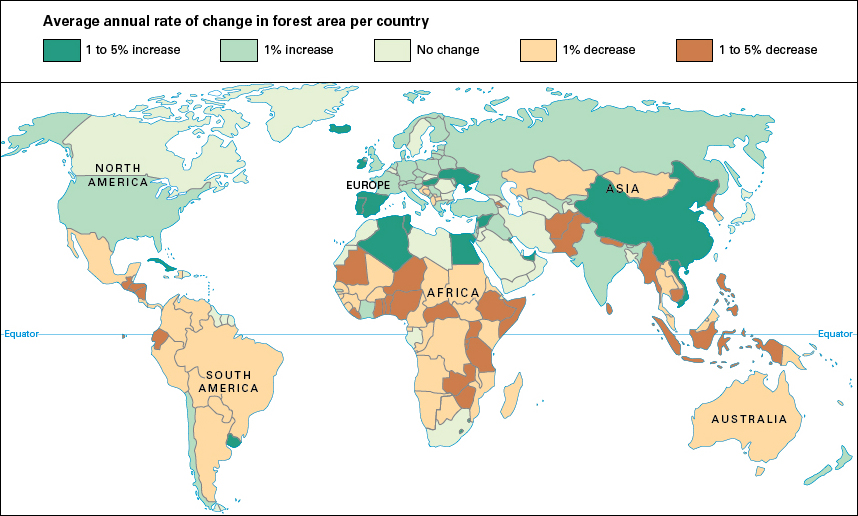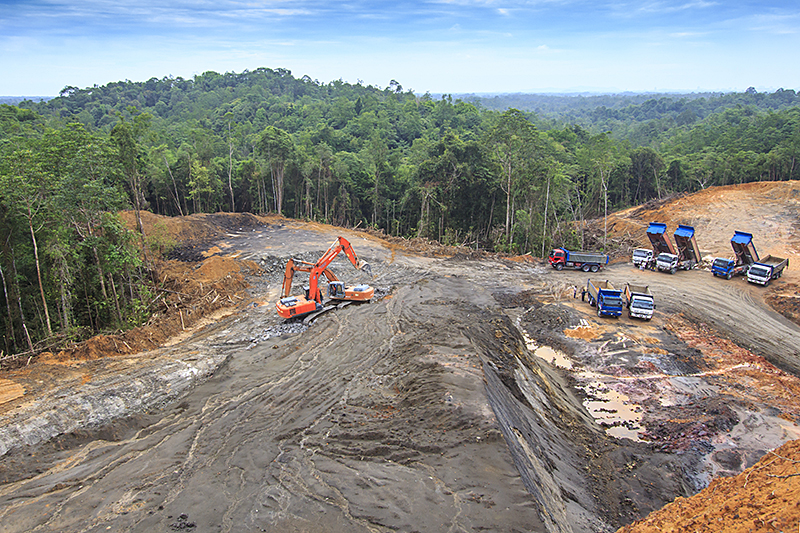Deforestation is the destruction or damage of forests. Human beings cause most deforestation. People clear forests to create farmland, to harvest timber, and to build structures. Humans have been cutting down trees and burning forests for thousands of years. Deforestation has become severe, however, since the 1800’s.

Natural forests once covered much of the world. About half of these native forests have been destroyed. Much of the forest that remains has been damaged. Many forests have been fragmented into smaller patches separated by farmland, roads, or cities.
Dozens of countries have lost at least 90 percent of their native forests. Areas with high population density have suffered the worst deforestation. Such areas include much of Europe, eastern North America, and eastern and southern Asia. The forests of many islands have been destroyed. For instance, most native forests have vanished from the islands of Japan, New Zealand, and Madagascar and the island of Java in Indonesia. Other islands, such as New Guinea, are rapidly losing their remaining forests.

Deforestation is especially severe in the tropics. As many as 30 million acres (12 million hectares) of tropical forests are destroyed each year—the equivalent of 40 football fields a minute. In addition, tropical forests contain more species (kinds) of animals and plants than any other habitat on Earth. As a result, tropical deforestation poses one of the greatest threats to biodiversity—that is, the variety of plant and animal species.
Deforestation throughout the world also contributes substantially to global warming, an increase in the average temperature at Earth’s surface (see Global warming). As trees grow, they remove carbon dioxide from the air through the process of photosynthesis (see Photosynthesis). If a tree is killed, its carbon returns to the atmosphere as carbon dioxide. Increases in carbon dioxide are a major cause of global warming. Thus, people in some areas preserve or restore forests in an effort to reduce global warming.
Agriculture
ranks as the most important direct cause of deforestation. For example, large areas of the Amazon rain forest have been cleared for cattle ranches and soybean farms. In Southeast Asia, native forests have been replaced by oil palm or rubber tree plantations. Most of the native forests in Europe, eastern China, India, and much of North America were destroyed and replaced by farms. In some areas, farmers practice slash-and-burn agriculture. In this method, farmers clear an area by cutting down trees and burning them. The ashes help fertilize the soil. The farmers typically grow crops in the area for one to three years. Eventually, the crops use up the nutrients in the soil. Then, farmers clear a new area.

Logging
ranks as another important cause of deforestation. Industrial logging has destroyed native forests in many areas, such as large parts of North America. These areas are typically replanted with a single species of commercially valuable timber, such as ponderosa pine. Such forests support relatively little wildlife. They also are more vulnerable to disease.
Recovery
of forests has begun in some areas. In the eastern United States, for example, forests are recovering because farming has declined.
